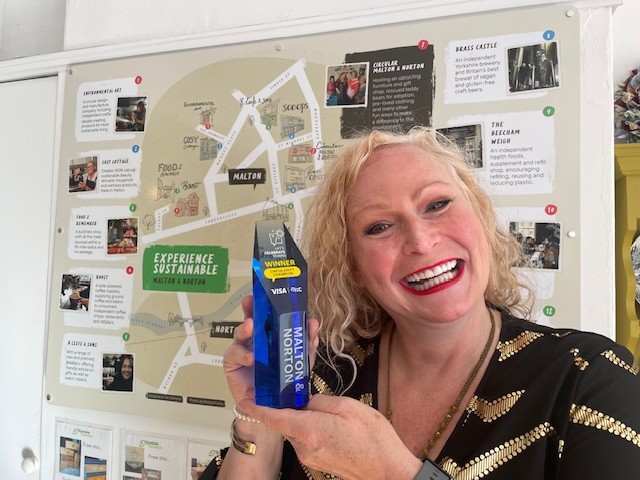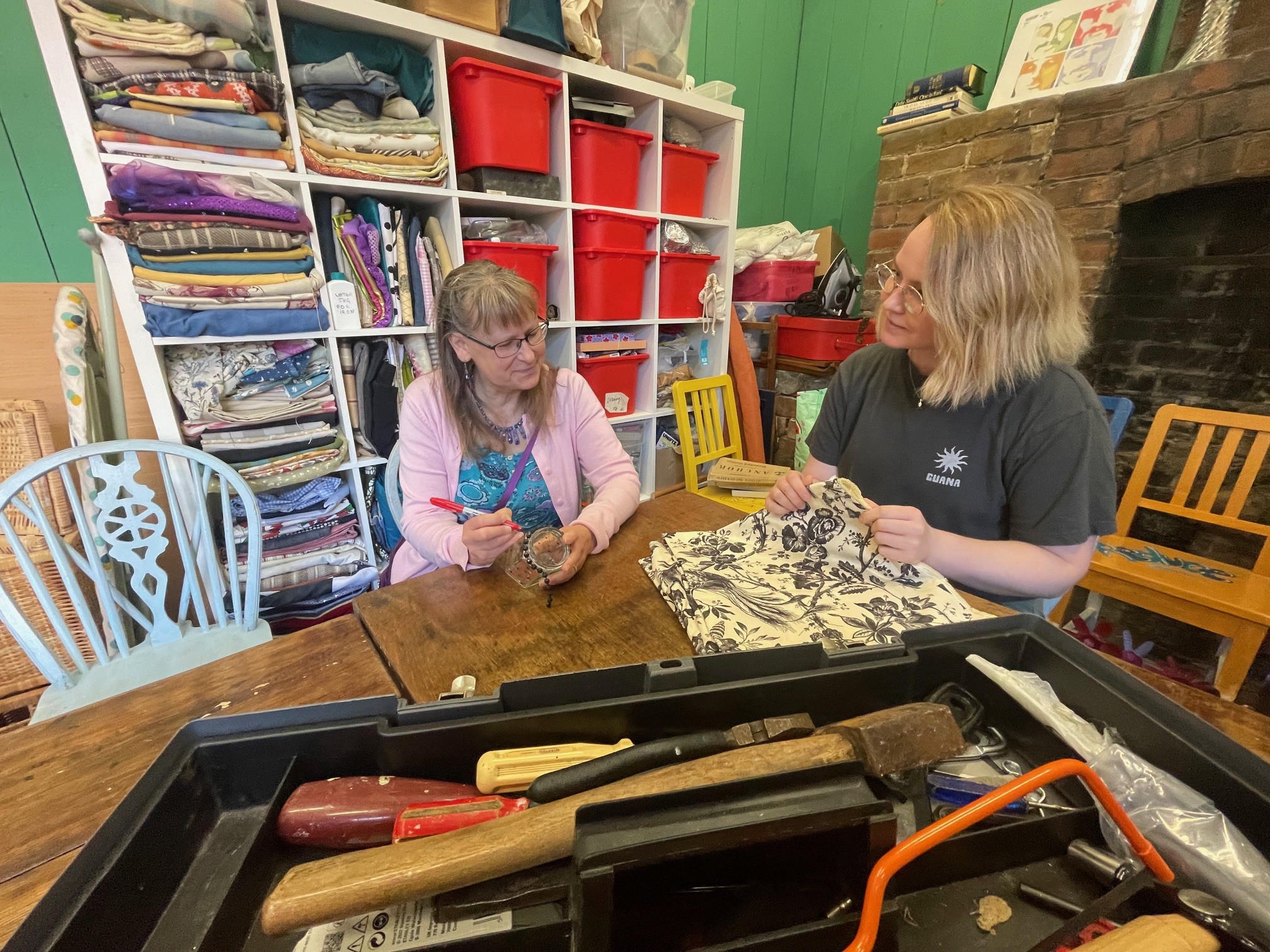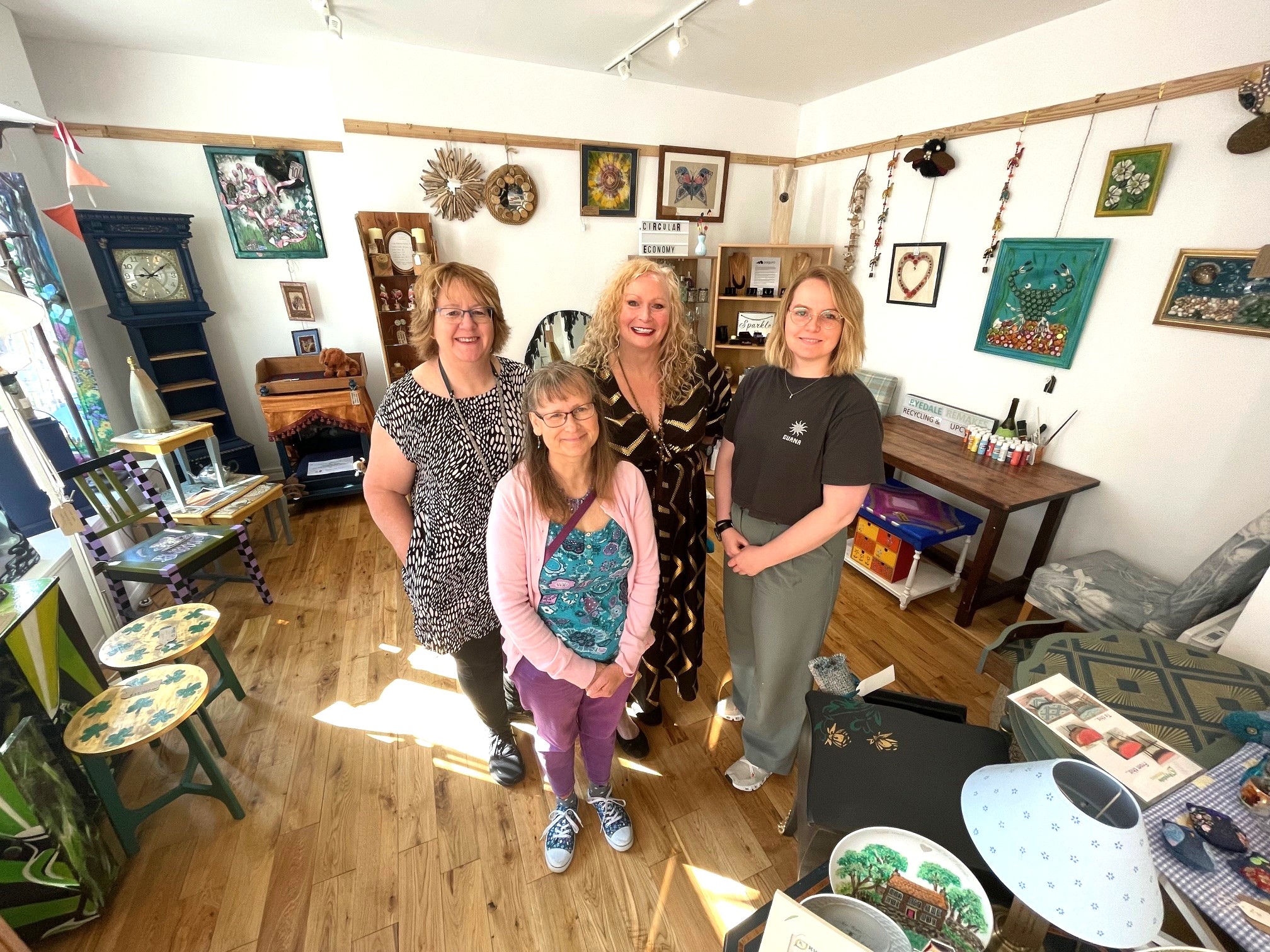It may look like a boutique store with its vintage, pre-loved clothes and upcycled furniture, but behind the Malton high street façade is an award-winning organisation trailblazing the circular economy.
In July this year, Circular Malton & Norton won the Best Circular Champion category at the national ‘Let’s Celebrate Towns’ awards, organised by VISA and the British Retail Consortium, at the House of Lords.
After picking up the award, Sue Jefferson, Co-Founder and Director of Malton & Norton CIC, said it was recognition for the group’s ambition to become the first circular market town.
What is a circular economy?
Keeping items and materials in circulation is at the heart of how a circular economy operates. Whether reusing items, repurposing unwanted furniture, reducing energy use or utilising innovative science to transform business waste into other useful products, it’s about making the most of all our resources, including people, products, services, systems and our planet.
While the concept of circular economies has been around for a long time, the concept of circular towns, such as Malton and Norton, was initiated as a pilot project in 2019, under the Local Enterprise Partnership – predecessor to York and North Yorkshire Combined Authority.
So how have these talented businesspeople, volunteers, crafters and scientists built an organisation which not only builds communities, but now advises the UK Government and links our region’s research excellence to businesses of all sizes?
The hesitant majority
Speaking with fellow volunteers at Circular Malton & Norton’s new high street hub in Wheelgate, Sue Jefferson said their mission is to engage the ‘hesitant majority’.
“These are the people who, like most of us, want to do something for the environment but barriers often exist such as time, money and perceived risks. We want to make it fun and accessible for people to make a difference by creating a path for people to more easily change behaviours.
“Mass produced, single use and throwaway products are seen as the norm now. We want to go back to our roots. It was normal for generations before to reuse, repurpose, make do and mend. Now increasingly appealing to all ages and all people, the uniqueness and affordability of upcycled and pre-loved products is attractive in its own right.
“Beyond the individual benefits, a circular economy is a way to bring economic growth. It can help market towns thrive. As businesses collaborate, costs and waste are reduced, innovative skills are developed and as reputations grow, the town attracts business and inward investment. Importantly nobody is left behind as circular actions are inclusive, bringing social and economic as well as environmental benefits.”

As visitors and locals experience the high street circular hub, where Sue says every purchase makes a difference, 70 per cent of these people tell Circular Malton and Norton they are further inspired to act. The organisation offers a range of services and community activities such as DIY upcycling, hosting repair cafes and home energy advice. Tote bags can be created from donated textiles, ceramics and bottles made into table lamps and home gifts and unfashionable furniture given new life.
Sue added: “We’re bringing life to the circular economy in a way which can inspire people. What starts with making draft excluders from discarded textiles leads on to workshops on how to redesign items for the home, reduce energy bills or answering questions on all things renewables. “
“We see it as a positive and effortless way towards net zero, alongside bringing social and economic benefits – for residents and businesses.”

Linking innovation to business
While the grassroots work is introducing people to the circular economy, the organisation also works with owner-operated businesses and larger organisations on reducing costs and emissions through rethinking energy and waste.
“Businesses tend to work in their own sector bubble,” said Sue. “But what if one business’s waste is another one’s raw material? What if we can get insightful conversations flowing between the waste bioscience excellence in our region and our manufacturing businesses?
“We have close links with the whole bio economy, such as the Biorenewables Development Centre, Fera Science, Askham Bryan Agricultural College and the Universities of York and the York St John, all supporting one of our region’s sectors of high potential growth. As a result of our range of circular initiatives and the behaviour change we have ignited, we are now advisors to the UK Government’s circular economy task force, demonstrating ways to bring the additional social and economic benefits of embracing the circular economy.”
With York and North Yorkshire looking to achieve carbon negative status by 2040, circular town principles and behaviour change will form part of YNYCA’s forthcoming refresh of its Routemap to Carbon Negative. The plan recognises that every organisation, business, community and individual can play a part and make a difference.
Circular Malton & Norton is an example of how easy it is to make that difference.
To find out more or become involved with Circular Malton & Norton, visit their website
Find out more on York and North Yorkshire Combined Authority’s own Circular Yorkshire campaign here.

